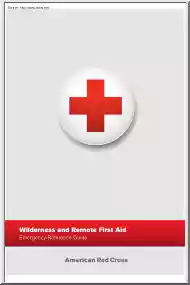Értékelések
Nincs még értékelés. Legyél Te az első!
Tartalmi kivonat
Source: http://www.doksinet BOOK REVIEWS Dictionary of Parasitology Peter J. Gosling CRC Press, 2005 ISBN: 0415308550 Pages: 394; Price: US $129.95 The authors’ intent in writing this dictionary is to provide a concise, clear, up-to-date, accurate use of terms to be used when communicating scientific information in the field of parasitology. This exhaustive text, with more than 11,500 entries, is at first read simply an alphabetized collection of names of organisms and terms associated with the science of parasitology. Upon closer reading, however, one spends more and more time going page by page either refreshing forgotten terminology, or learning new meaning for a particular term or disease. For the student of words, both newcomers to the field or seasoned hands, this book will provide useful information. Some concerns exist, such as continued use of outdated names, e.g, Dipetalonema for a number of filarial infections that have been correctly placed in the genus Mansonella for
>20 years. There are also some gaps, such as the absence of an important genus of microsporidia, Enterocytozoon, but overall, readers will be able to find definitions for common and eclectic terms. The dictionary covers a wider range of terms than parasitology; some virology terms, such as Aino virus, are included, as are some far afield terms, including hundredweight, hydrogen half-cell, and zwitterions. These additions add to the level of interest as the reader leafs from page to page looking for familiar friends and making new acquaintances. Zwitterions, in case you have forgotten, are ions that carry both a positive and negative charge Mark Eberhard* *Centers for Disease Control Prevention, Atlanta, Georgia, USA and Address for correspondence: Mark L. Eberhard, Centers for Disease Control and Prevention, 1600 Clifton Rd NE, Mailstop F22, Atlanta, GA 30333, USA; fax: 770-488-7794; email: MEberhard@cdc.gov Interdisciplinary Public Health Reasoning and Epidemic Modelling: The
Case of Black Death George Christakos, Ricardo A. Olea, Marc L Serre, Hwa-Lung Yu, and Lin-Lin Wang Springer, Berlin, Germany, 2005 ISBN: 3-540-25794-2 Pages: 320; Price: US $129.00 Because public health officials increasingly rely on mathematical models to help them prevent and control diseases, this book is a very timely addition to the literature. The authors’ overall theme is that generating accurate and useful (to public health officials) mathematical models of disease epidemiology and the impact of interventions requires a true interdisciplinary approach. They maintain that there is a need to incorporate knowledge and data from both physical and life sciences into such models. For example, the authors argue that information should be included on the clinical (life science) aspects of a disease (e.g, incubation period, efficiency of transmission), as well as on how the disease spreads geographically (physical science) over time (different communities could experience very
different patterns of spread). They also note that the onus of improving models does not lie solely with the modelers. Users, particularly public health officials, are part of an interdisciplinary team. Consequently, users have to better acquaint themselves with what models can and cannot do (i.e, the production of mathematical “black boxes” is not entirely the fault of the modelers). The authors illustrate their themes by comprehensively examining the spread of the Black Death in the mid-1300s. Many Emerging Infectious Diseases readers are likely to find this book overly technical, containing many mathematical formulas, mathematical notations, and complex graphs. However, a reader willing to ignore the potential intimidation of such material may find interesting discussions of modeling philosophy, such as the importance of including probability (i.e, uncertainty or “randomness”) and the impact of spacetime For the latter, even the most ardently nonmathematical reader is likely
to be fascinated by the maps in Chapter 5 that depict the spread of the Black Death. The data required to model (map out) the spread of disease over time and space require intensive “detective work,” to which epidemiologists and public health officials can readily contribute. Readers interested in the background data related to the epidemiology of the Black Death will probably enjoy perusing the detailed, annotated data appendices. This would be a fine addition to a technical library as a resource for persons who conduct sophisticated mathematical modeling. However, persons looking for a more general historic overview of the Black Death (how it spread and its consequences) would be advised to consider other works such as those by McNeill (1) or Cantor (2). Emerging Infectious Diseases • www.cdcgov/eid • Vol 12, No 2, February 2006 361 Source: http://www.doksinet BOOK REVIEWS Martin I. Meltzer* *Centers for Disease Control Prevention, Atlanta, Georgia, USA and References
1. McNeill WH Plagues and peoples New York: Anchor Books; 1998. 2. Cantor NF In the wake of the plague: the Black Death and the world it made. New York: Perennial; 2001. Address for correspondence: Martin I. Meltzer, National Center for Infectious Diseases, Centers for Disease Control and Prevention, Mailstop D-59, 1600 Clifton Rd, Atlanta, GA 30333, USA; fax: 404-371-5445; email: mmeltzer@cdc.gov Structural Biology of Bacterial Pathogenesis Gabriel Waksman, Michael Caparon, and Scott Hultgren, editors American Society for Microbiology Press, Washington, DC, 2005 ISBN: 1555813011 Pages: 326; Price: US $115.95 362 Research into the pathogenesis of microbial infections has a long and fruitful history, rich with elucidation of mechanisms that have resulted in better treatments and new strategies for vaccine development. Stanley Falkow’s investigations into the intimate relationships between bacteria and host cells followed his comment that, “The microbe is just trying to make a
living.” Structural Biology of Bacterial Pathogenesis, by Gabriel Waksman, Michael Caparon, and Scott Hultgren, is a state-of-the-art treatise describing the known molecular mechanisms by which bacterial pathogens actively probe, sense, and respond to their environment through 2-component systems and through sigma and anti-sigma factors. In addition, the authors describe in great detail the recognition of host receptors by pili and the pilus biogenesis by chaperon-user pathways. The chapter on the role of sortases on surface expression of surface proteins among gram-positive bacteria is comprehensive and well written. Four excellent chapters describe 6 secretion systems among bacterial pathogens and elucidate the specific mechanisms by which bacterial pathogens usurp intracellular mechanisms of the host cell. This book is enjoyable to read, is extensively referenced, and has 52 superb structural models in full color, based in part on x-ray crystallography. Unfortunately, these
plates are all in 1 section and require the reader to page back and forth from specific chapters to the “core color plates.” This book is not a compendium of bacterial toxins and virulence factors but rather a selection of molecular mechanisms of host-parasite interaction. This is a unique book that will be a valuable asset for researchers in the field of pathogenesis, graduate students, faculty who teach microbial pathogenesis, biotech companies, and pharmaceutical companies involved in antimicrobial drug or vaccine development. The sophisticated molecular mechanisms that pathogenic bacteria have developed through their evolution with the human host, as described in this book, are credible evidence that our adversaries, the microbes, are doing better than “just making a living.” Dennis Stevens* *Veterans Administration Medical Center, Boise, Idaho, USA Address for correspondence: Dennis Stevens, Veterans Administration Medical Center, Infectious Diseases Section, 500 West Fort
St, Boise, Idaho 83702, USA; fax: 208-422-1365; email: dlsteven@mindspring.com Emerging Infectious Diseases • www.cdcgov/eid • Vol 12, No 2, February 2006
>20 years. There are also some gaps, such as the absence of an important genus of microsporidia, Enterocytozoon, but overall, readers will be able to find definitions for common and eclectic terms. The dictionary covers a wider range of terms than parasitology; some virology terms, such as Aino virus, are included, as are some far afield terms, including hundredweight, hydrogen half-cell, and zwitterions. These additions add to the level of interest as the reader leafs from page to page looking for familiar friends and making new acquaintances. Zwitterions, in case you have forgotten, are ions that carry both a positive and negative charge Mark Eberhard* *Centers for Disease Control Prevention, Atlanta, Georgia, USA and Address for correspondence: Mark L. Eberhard, Centers for Disease Control and Prevention, 1600 Clifton Rd NE, Mailstop F22, Atlanta, GA 30333, USA; fax: 770-488-7794; email: MEberhard@cdc.gov Interdisciplinary Public Health Reasoning and Epidemic Modelling: The
Case of Black Death George Christakos, Ricardo A. Olea, Marc L Serre, Hwa-Lung Yu, and Lin-Lin Wang Springer, Berlin, Germany, 2005 ISBN: 3-540-25794-2 Pages: 320; Price: US $129.00 Because public health officials increasingly rely on mathematical models to help them prevent and control diseases, this book is a very timely addition to the literature. The authors’ overall theme is that generating accurate and useful (to public health officials) mathematical models of disease epidemiology and the impact of interventions requires a true interdisciplinary approach. They maintain that there is a need to incorporate knowledge and data from both physical and life sciences into such models. For example, the authors argue that information should be included on the clinical (life science) aspects of a disease (e.g, incubation period, efficiency of transmission), as well as on how the disease spreads geographically (physical science) over time (different communities could experience very
different patterns of spread). They also note that the onus of improving models does not lie solely with the modelers. Users, particularly public health officials, are part of an interdisciplinary team. Consequently, users have to better acquaint themselves with what models can and cannot do (i.e, the production of mathematical “black boxes” is not entirely the fault of the modelers). The authors illustrate their themes by comprehensively examining the spread of the Black Death in the mid-1300s. Many Emerging Infectious Diseases readers are likely to find this book overly technical, containing many mathematical formulas, mathematical notations, and complex graphs. However, a reader willing to ignore the potential intimidation of such material may find interesting discussions of modeling philosophy, such as the importance of including probability (i.e, uncertainty or “randomness”) and the impact of spacetime For the latter, even the most ardently nonmathematical reader is likely
to be fascinated by the maps in Chapter 5 that depict the spread of the Black Death. The data required to model (map out) the spread of disease over time and space require intensive “detective work,” to which epidemiologists and public health officials can readily contribute. Readers interested in the background data related to the epidemiology of the Black Death will probably enjoy perusing the detailed, annotated data appendices. This would be a fine addition to a technical library as a resource for persons who conduct sophisticated mathematical modeling. However, persons looking for a more general historic overview of the Black Death (how it spread and its consequences) would be advised to consider other works such as those by McNeill (1) or Cantor (2). Emerging Infectious Diseases • www.cdcgov/eid • Vol 12, No 2, February 2006 361 Source: http://www.doksinet BOOK REVIEWS Martin I. Meltzer* *Centers for Disease Control Prevention, Atlanta, Georgia, USA and References
1. McNeill WH Plagues and peoples New York: Anchor Books; 1998. 2. Cantor NF In the wake of the plague: the Black Death and the world it made. New York: Perennial; 2001. Address for correspondence: Martin I. Meltzer, National Center for Infectious Diseases, Centers for Disease Control and Prevention, Mailstop D-59, 1600 Clifton Rd, Atlanta, GA 30333, USA; fax: 404-371-5445; email: mmeltzer@cdc.gov Structural Biology of Bacterial Pathogenesis Gabriel Waksman, Michael Caparon, and Scott Hultgren, editors American Society for Microbiology Press, Washington, DC, 2005 ISBN: 1555813011 Pages: 326; Price: US $115.95 362 Research into the pathogenesis of microbial infections has a long and fruitful history, rich with elucidation of mechanisms that have resulted in better treatments and new strategies for vaccine development. Stanley Falkow’s investigations into the intimate relationships between bacteria and host cells followed his comment that, “The microbe is just trying to make a
living.” Structural Biology of Bacterial Pathogenesis, by Gabriel Waksman, Michael Caparon, and Scott Hultgren, is a state-of-the-art treatise describing the known molecular mechanisms by which bacterial pathogens actively probe, sense, and respond to their environment through 2-component systems and through sigma and anti-sigma factors. In addition, the authors describe in great detail the recognition of host receptors by pili and the pilus biogenesis by chaperon-user pathways. The chapter on the role of sortases on surface expression of surface proteins among gram-positive bacteria is comprehensive and well written. Four excellent chapters describe 6 secretion systems among bacterial pathogens and elucidate the specific mechanisms by which bacterial pathogens usurp intracellular mechanisms of the host cell. This book is enjoyable to read, is extensively referenced, and has 52 superb structural models in full color, based in part on x-ray crystallography. Unfortunately, these
plates are all in 1 section and require the reader to page back and forth from specific chapters to the “core color plates.” This book is not a compendium of bacterial toxins and virulence factors but rather a selection of molecular mechanisms of host-parasite interaction. This is a unique book that will be a valuable asset for researchers in the field of pathogenesis, graduate students, faculty who teach microbial pathogenesis, biotech companies, and pharmaceutical companies involved in antimicrobial drug or vaccine development. The sophisticated molecular mechanisms that pathogenic bacteria have developed through their evolution with the human host, as described in this book, are credible evidence that our adversaries, the microbes, are doing better than “just making a living.” Dennis Stevens* *Veterans Administration Medical Center, Boise, Idaho, USA Address for correspondence: Dennis Stevens, Veterans Administration Medical Center, Infectious Diseases Section, 500 West Fort
St, Boise, Idaho 83702, USA; fax: 208-422-1365; email: dlsteven@mindspring.com Emerging Infectious Diseases • www.cdcgov/eid • Vol 12, No 2, February 2006





